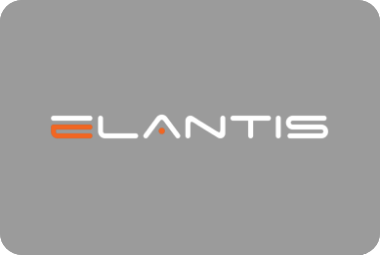Microsoft Power Apps is a cloud-based platform that helps you create custom business applications. It’s an easy-to-use tool for creating mobile, web, and desktop apps, which provides users with a faster way to build apps without needing to write code. With Power Apps, you can easily create powerful solutions that can be used across multiple devices and operating systems.
PowerApps offers many benefits, including:
- You can build apps without writing code or learning how to program.
- You can share your work with other users and collaborate on projects together in real time.
- Your data is always backed up, so if something happens to your computer or device—you won’t lose any of your work!
Furthermore, it includes features such as rules engines and automated workflows that help streamline manual processes. The use of Power Apps allows organizations to save time by automating repetitive tasks while reducing the need for costly development resources.
In this article, we will outline five creative use cases for Microsoft Power Apps and how your organization can utilize this powerful platform.
Use Case 1: Automating Business Processes
PowerApps is a powerful tool for automating business processes. It allows you to create custom apps that can be used to streamline and automate repetitive tasks, like creating customer invoices or sending out employee schedules.
Microsoft Power Apps allows users to automate manual processes by using rules and workflows. This feature enables organizations to quickly create automated tasks that can be triggered based on certain pre-defined criteria. For example, Power Apps can be used to set up an automated workflow that is triggered when a customer submits a purchase order. The workflow will then automatically generate an invoice and send it to the customer. Through the automation of manual processes, organizations conserve time and minimize human errors linked to manual activities.
Power Apps comes with built-in templates and connectors that allow users to quickly integrate data from various sources such as databases, SharePoint Online, Dynamics 365, and other Microsoft 365 applications. This helps streamline operations by enabling users to access data from multiple platforms at once without having to manually transfer information between them—saving time in the process. Furthermore, this integration also ensures better accuracy of data since all connected systems have access to one single source of truth which eliminates discrepancies caused by differences between individual databases or systems.
Use Case 2: Building Custom Apps
One of the most powerful features of Microsoft Power Apps is its ability to create custom apps without coding. You can build an app from scratch or extend an existing app, and then customize it to suit your organization’s needs. Using this feature, you can create custom apps that meet your unique requirements for data collection and analysis. You can also leverage existing apps as building blocks for new ones by adding new fields or editing existing ones—and then share them with others who may need similar functionality in their own workflows!
Microsoft Power Apps allows users to build custom applications by using custom components and recurring flows. This feature enables organizations to quickly create complex business solutions that can be used across multiple devices and platforms. Custom components allow users to add extended features such as data validation, conditional formatting, or even integration with external systems into their apps without needing prior coding knowledge. Recurring flows enable users to automate tasks that would normally involve manual steps—such as notifications, data processing, or synchronization between different systems—saving time in the process.
Furthermore, Microsoft Power Apps also provides integration with Azure services which enables organizations to extend the platform’s functionality even further than what is available out of the box. For example, developers can use Azure Cognitive Services for facial recognition within an app or take advantage of Machine Learning (ML) capabilities through Azure ML services for predictive analysis purposes to better understand customer behaviour patterns and trends.
Additionally, other useful services like App Insights are also available through Power Apps which provide valuable insights into how customers interact with your application—enabling you to improve user experience over time.
Use Case 3: Improving Data Quality
Data quality is the measure of how well your data represents reality. It is important to understand that data quality issues are not always obvious and can be hard to detect, especially if you are not looking for them.
One common problem with any type of database is incomplete or inaccurate information. For example, consider an app that tracks customer orders: if you don’t capture all the details about each order—including items purchased, quantities ordered and prices paid—you may not be able to provide accurate reports on sales trends or profitability over time.
Microsoft Power BI can be used to create real-time data displays with Power Apps. With the help of this feature, users can quickly visualize and analyze their data in order to gain insight into trends or correlations within various datasets. Additionally, users can also use Power Automate for more complex analysis tasks such as automated data cleansing processes which helps improve the accuracy and integrity of their stored information. For example, a user could set up an automated workflow that runs every night and searches through any new or existing records for typos or inconsistencies and then flags them accordingly—all without needing any manual intervention.
In addition, Power Automate can also be used to trigger alerts when certain conditions are met in your dataset. This helps ensure that organizations remain informed about important changes within their business environment—such as changes in customer preferences or stock levels—and can act promptly on these insights rather than waiting until it’s too late. Furthermore, by automating tedious manual processes associated with analyzing large volumes of data, organizations save time and resources while ensuring higher accuracy levels throughout their operations.
Use Case 4: Collaboration and Communication
Collaboration and communication are key to team success. Microsoft Power Apps are a great way to facilitate collaboration and communication within teams, whether you are working with colleagues in the same office or across the globe.
Power Apps can be used for everything from sharing documents to scheduling meetings, creating surveys or polls, organizing events, and more. You can even use them as an extension of your email inbox by creating custom forms that automatically send emails when users complete them!
Here are a couple examples of Power Apps that enable team collaboration:
- A project management app that allows you to assign tasks based on due dates or priority level (e.g., high priority tasks will appear at the top).
- An event planning app where attendees can RSVP for events using their email address instead of having to enter it manually into each ticket purchase form.
Additionally, Power Apps can integrate meeting schedules with Outlook, which allows users to easily access their emails, contacts, calendars, and tasks within a single platform. This helps save time when setting up meetings as users no longer have to switch between different apps or programs in order to accomplish simple tasks like scheduling an appointment or sending invitations. Additionally, the integration also ensures that everyone involved in the meeting has access to the latest version of all relevant information such as contact details and agenda items—ensuring better coordination throughout the organization.
Another way organizations can use Power Apps for collaboration and communication is through chatbots for customer engagement. Chatbots are automated programs that simulate conversations with customers by responding to queries without any human intervention—allowing companies to quickly answer inquiries from potential customers at scale while freeing up resources that were previously needed for manual support operations. Chatbots can improve the customer experience since they provide faster response times than traditional methods such as phone calls or emails—allowing organizations to address customer issues more efficiently without sacrificing quality of service. Finally, these bots can even be programmed with natural language processing capabilities so they understand complex commands or questions posed by customers—helping them get answers faster while providing a smoother user experience overall.
Use Case 5: Managing On-Premises Data
Microsoft Power Apps can be used to manage on-premises data. The Common Data Service (CDS) provides users with a way to securely store and access their data in the cloud, while still maintaining control of data on-premises. With CDS, organizations can easily create custom connectors that are tailored to their specific needs to securely connect their own SQL Server databases or other legacy systems. This allows users to quickly build powerful applications without needing any coding knowledge and provides them with an easy way to integrate existing data into new solutions—saving time and money in the process.
In addition, custom connectors provide even more advantages for managing on-premises data within Power Apps by allowing users to extend the platform’s functionality beyond what is available out of the box. For example, custom connectors can be used to set up automated workflows that sync certain elements from different databases or programs whenever changes occur—ensuring accuracy across all connected systems at all times while eliminating manual processes associated with this task—saving time and resources in the long run.
Furthermore, these same connectors could also be used for integrating third party services such as payment gateways or loyalty programs directly into an application—allowing organizations to leverage external resources without having to manually transfer information between them every time something changes.
Overall, Microsoft Power Apps provides organizations with an efficient and cost-effective way of managing on-premises data while taking advantage of its many features—such as automation capabilities and integration options—to further streamline operations within their organizations. By leveraging these tools and features, organizations save both time and money when creating powerful custom applications that integrate seamlessly with existing infrastructure yet remain secure from potential threats outside of their control.
Experience the Full Potential of Microsoft Power Apps
We encourage you to experiment with Microsoft Power Apps and explore its full potential. Power Apps offers organizations a powerful and cost-effective alternative to traditional development methods. It allows users to quickly create complex applications without prior coding knowledge, while also utilizing automated tools like Power Automate that can save time and resources in the long run. Furthermore, integration options such as custom connectors enable companies to leverage external services or databases within their apps—allowing them to take advantage of existing infrastructure while ensuring data accuracy.
By combining these features, organizations can rapidly develop highly customized solutions for their unique needs across multiple devices and platforms—leading to improved customer experiences and increased efficiency throughout the organization.
Curious to explore the power of Power Apps for your organization or need support with planning a Power Apps project? Contact Elantis to request a free consultation with one of our automation experts.


























